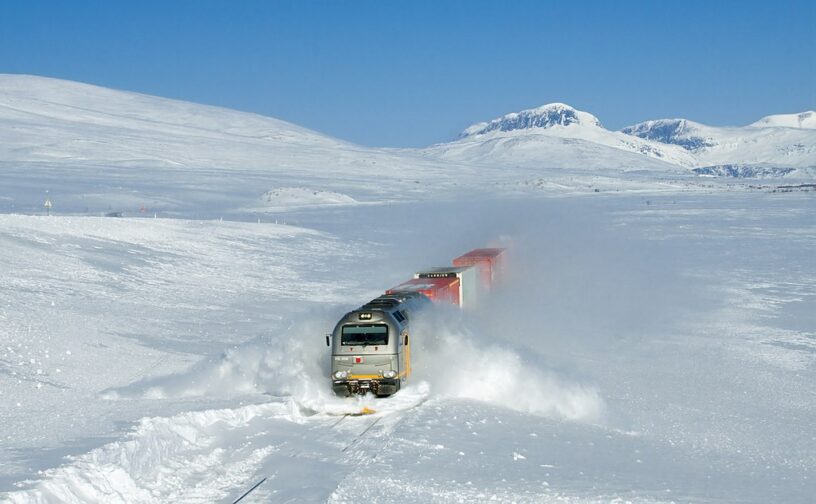Top 10 Facts About Snow
When you think of snow you probably think of a cosy time with family and friends over Christmas. If you’ve never seen snow I bet you’re mostly wondering how it feels, how cold it gets and if it’s actually possible to form a snow angel.
Apart from painting towns white snow is another weather season that most people have little knowledge about. If you’re interested in getting fascinating snow-related information or if you prefer to bundle up and hibernate during the snow season, we know that these 10 facts about snow will be fascinating.
1. Snow looks white but it’s not
I know you’re reading this and wondering how this is possibly true, but it is. The “white stuff” is actually translucent rather than white, as any knowledgeable expert on snow can inform you. It appears white because of the light reflecting off of it; the snowflake’s multiple sides scatter light in all directions, diffusing the full-colour spectrum. Besides that, snow can take on a broad range of beautiful tints.
It can turn black, orange, or blue due to pollution, dust, or chilly freshwater algae. In his early writings, Aristotle made reference to pink or “watermelon snow,” which is a phenomenon brought on by algae containing astaxanthin, a substance also present in carrots.
2. Each snowflake’s shapes depend on the temperature of the air around them

Electron and Confocal Microscopy Laboratory by User:Brian0918 from Wikimedia Commons
Each snowflake has a unique shape when it falls from the sky, which is determined by the surrounding air’s temperature. Water vapour is crystallised by the chilly air, creating beautiful shapes that almost appear too perfect to be true. As opposed to being big and bulky, some snowflakes are tiny and lacy. So the next time a snowflake lands on your tongue, stop to admire both its lovely shape and the intricate interaction between moisture and temperature that gave it life.
3. Snowflakes can be gigantic
Large snowflakes up to six inches in diameter have been observed in various locations, and some people have even stated that snowflakes up to 15 inches in diameter have been seen. Scientists currently claim that nothing can stop flakes from becoming so big, despite the fact that many have questioned these stories and pointed out the lack of supporting evidence.
These large snowflakes may exist but go unreported, unnoticed, or be broken up by wind currents as they drop because flake size isn’t one of the meteorological measuring criteria for snow.
4. Snow absorbs sound waves

Snow in Renan by Nicolas Schwab from Wikimedia Commons
Snow has a remarkable ability for sound absorption, which results in a quiet silence that seems to surround everything in its vicinity. This is because sound waves lose energy and disperse into the air as a result of being trapped and scattered in the tiny spaces between snowflakes. As a result, even the loudest noises are muffled, and the world acquires a softer, more muted quality.
5. The Inuit have 50 different words related to the white stuff

Inuit by Ansgar Walk from Wikimedia Commons
It’s commonly said that the Inuit have 50 terms for snow, a claim that was first dismissed as pure speculation and later proven as being roughly true. Regardless of how many they truly have, it is little compared to the Scottish.
Scots have 421 words for snow, according to researchers at the University of Glasgow. These terms include “unbrak,” “spitters,” and “skelf,” which are huge snowflakes (the beginning of a thaw).
6. Don’t confuse a blizzard and a snowstorm
The amount of snow that falls and how strong the winds are are the key differences between a blizzard and a snowstorm. Any winter storm that includes moderate to heavy snowfall and continuous wind gusts is called a blizzard. Snowstorms are often less severe than blizzards, though they can still disrupt plans and make travelling dangerous.
A blizzard, on the other hand, is a far more severe type of winter weather, with heavy snowfall and strong winds that generate whiteout conditions, making travel next to impossible. If you’re ever tempted to call a snowfall a “blizzard,” you must know the difference. For snowfalls to be categorised as blizzards, you must understand this set of rules. Visibility must be less than 200 metres, and the wind must blow to about 48 kilometres per hour (30mph).
7. There are violent snow storms on Mars
In contrast to Earth, Mars has dry ice storms, which are made of carbon dioxide ice particles rather than water snow. With winds of up to 100 miles per hour during these storms, the Martian surface can get covered in thick layers of dry ice. These storms’ strong winds and chilly temperatures can make it difficult for Martian rovers to traverse and harm their equipment.
8. Certain monkeys love snow

Macaca fuscata by Daisuke Tashiro from Wikimedia Commons
Remember that we are not the only mammals who love a good snowball fight. Snow monkeys, commonly known as Japanese macaques, have been seen creating and interacting with snowballs. Juvenile macaques seem to like taking snowballs from one another and squabbling to get them back.
9. Too much snow can be toxic for human beings
Piblokto, also known as “Northern hysteria,” is a condition that affects Inuit people who live in the Arctic Circle if they spend too much time skiing or snowboarding. The symptoms include repetitive, meaningless speech or engaging in reckless or dangerous behaviour, followed by forgetfulness of the incident. In recent years, doctors have questioned whether the illness—which is said to be based on as few as eight cases—actually exists. It is thought that vitamin A poisoning is one source of the disorder.
10. There’s a psychological condition where some people fear the snow
Chionophobia, or a fear of snow, which derives from the Greek word for snow, “chion,” is one psychiatric illness that is unquestionably real. There are more irrational variations of the symptom, where people develop a severe fear of being trapped or buried in the snow even when there isn’t a single flake in sight or at the first sign of a flutter. The condition can develop as a result of a childhood trauma involving a snowy accident.
Planning a trip to Paris ? Get ready !
These are Amazon’s best-selling travel products that you may need for coming to Paris.
Bookstore
- The best travel book : Rick Steves – Paris 2023 – Learn more here
- Fodor’s Paris 2024 – Learn more here
Travel Gear
- Venture Pal Lightweight Backpack – Learn more here
- Samsonite Winfield 2 28″ Luggage – Learn more here
- Swig Savvy’s Stainless Steel Insulated Water Bottle – Learn more here
Check Amazon’s best-seller list for the most popular travel accessories. We sometimes read this list just to find out what new travel products people are buying.










